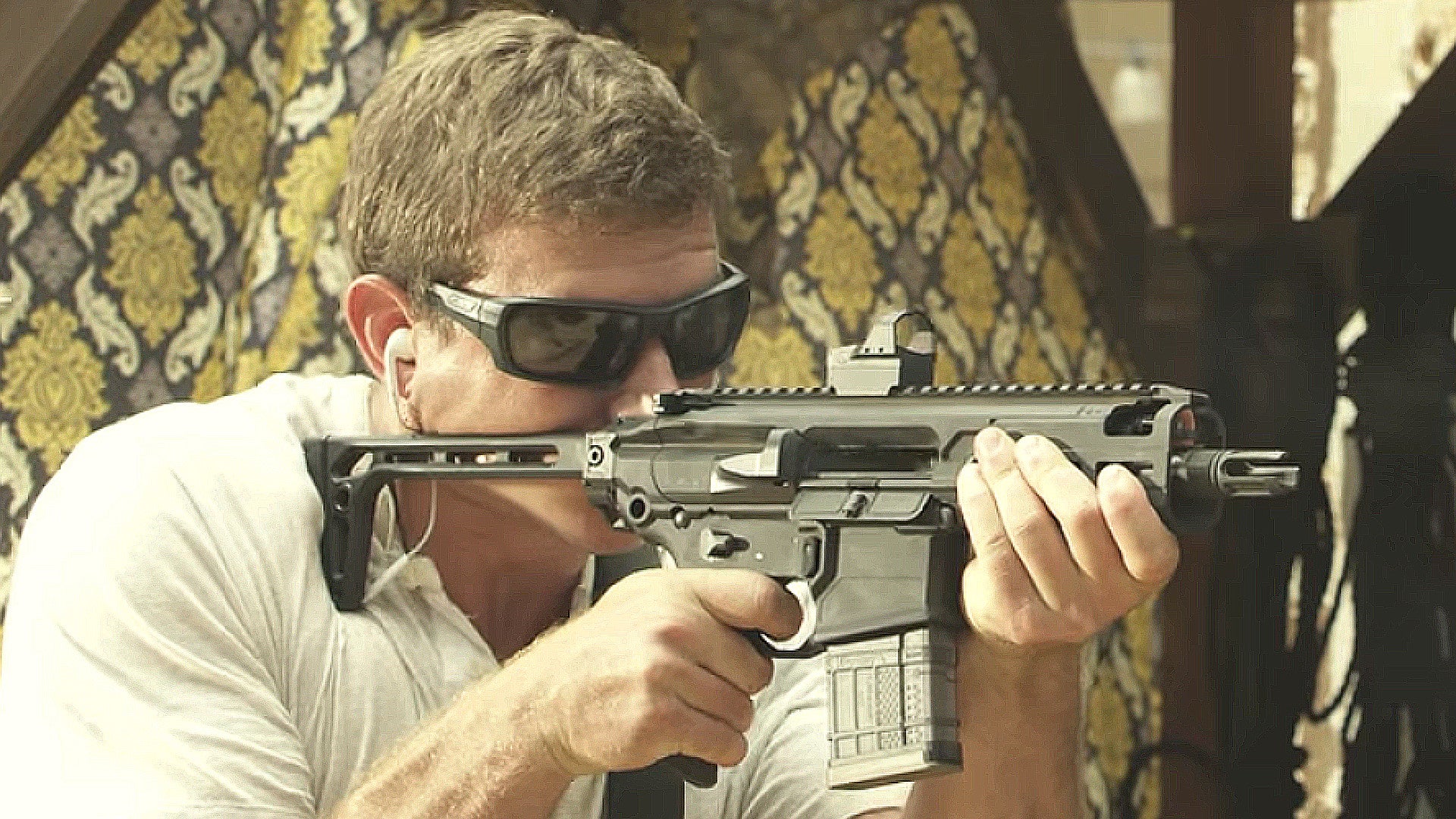U.S. Special Operations Command is planning to buy a small number of conversion kits from Swiss gun maker Sig Sauer to turn existing M4A1 carbines into new MCX Rattler personnel defense weapons, or PDWs. This purchase is in response to the command’s nearly year-old requirement for a tiny assault rifle able to fire both .300 Blackout and 5.56x45mm rounds, which we at The War Zone were first to report.
The U.S. Army, which is managing the contract on behalf of Special Operations Command (SOCOM), announced the plan on FedBizOpps, the U.S. government’s central contracting website, on Feb. 1, 2018. The proposed deal, which the service expects to finalize by the end of March 2018, will include 10 complete “MCX PDW” upper receiver groups in .300 Blackout and equal number of 5.56x45mm barrels. The notice and its attached documentation never specifically mention the Rattler trade name, but the caliber, 5.5-inch barrel length, and mention of a thin, side-folding “skeleton” buttstock are a perfect match for the design that Sig Sauer debuted at the annual SHOT Show trade show in Las Vegas, Nevada in January 2018.
“Sample systems are needed quickly to be used in formal combat evaluations,” according to one document, outlining the Army’s justification for handing a contract directly to Sig Sauer without a formal competition. “The current requirement is for 10 kits that will be used in evaluations that will help shape future requirements that are anticipated to be competed in a full and open manner.”
U.S. government rules and regulations require that any agency looking to issue this type of sole-source contract has to present a written argument to justify why it cannot take the time to go through a traditional process. Though the Army posted a copy of this document online, it redacted the estimated total value of the contract, as well as a number of other details.
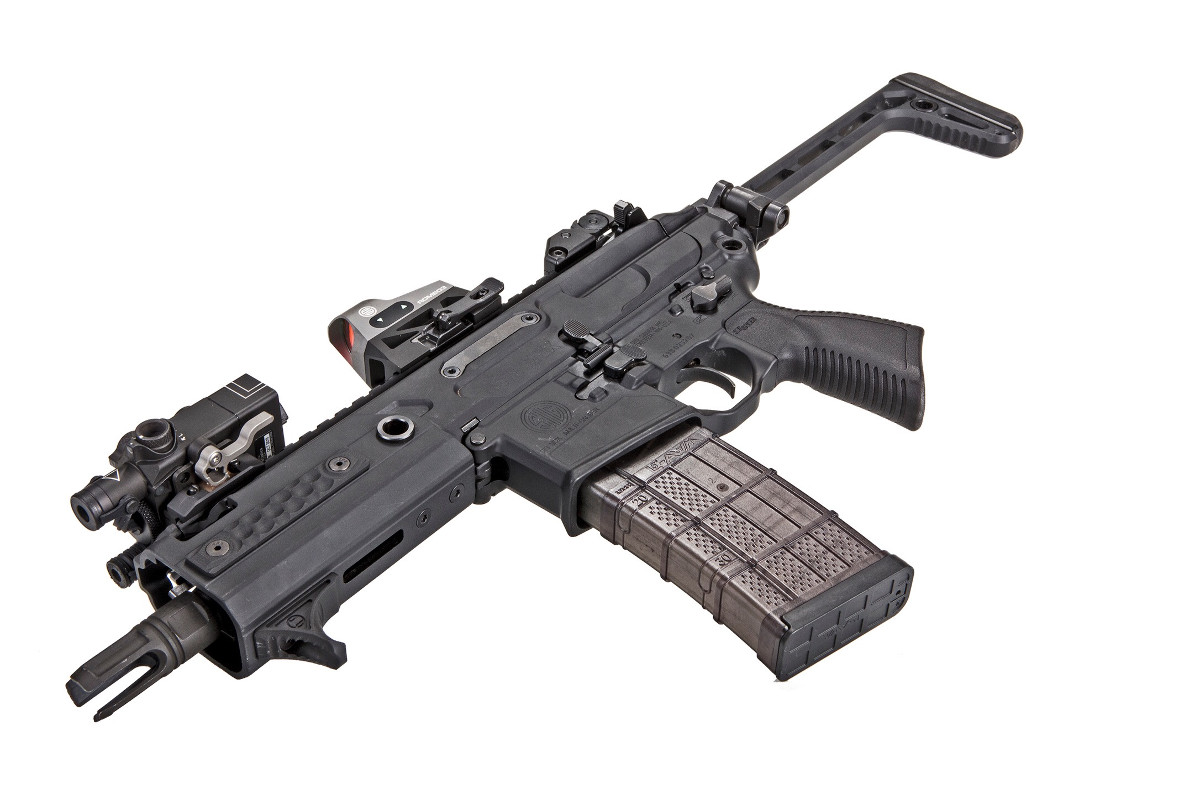
The documents do not say what unit or units will be evaluating the weapons, but the kits will go to the U.S. Navy’s Naval Surface Warfare Center in Crane, Indiana. This facility routinely supports the research and development of new small arms systems for the SEALs, which sometimes filter down to special operations forces in other services.
According to the documents, technicians at Crane will use existing M4A1 carbine lower receivers as the starting point to build the complete weapons. However, the conversion kits should also work without any issue on lowers from other AR-15 and M16-pattern weapons or derivatives, such as Heckler and Koch’s HK416, which is becoming increasingly popular with U.S. special operations forces and the U.S. Marine Corps, if necessary.
Like the HK416, the MCX series, including the Rattler, uses a physical gas piston to cycle the action rather than the AR-15/M16 series’ direct impingement system. The latter arrangement blows propellant gasses straight into the inner workings of the gun, which can cause particulate matter to build up and jam the gun unless the shooter makes sure to routinely clean their weapon.
From the purchase order, it is also clear that whoever the special operators in question are, they’re interested in testing more than one potential PDW configuration, making use of the already modular nature of Sig Sauer’s MCX family. In addition to the Rattler’s ultra-lightweight buttstock, the deal would include 10 standard full-size versions.
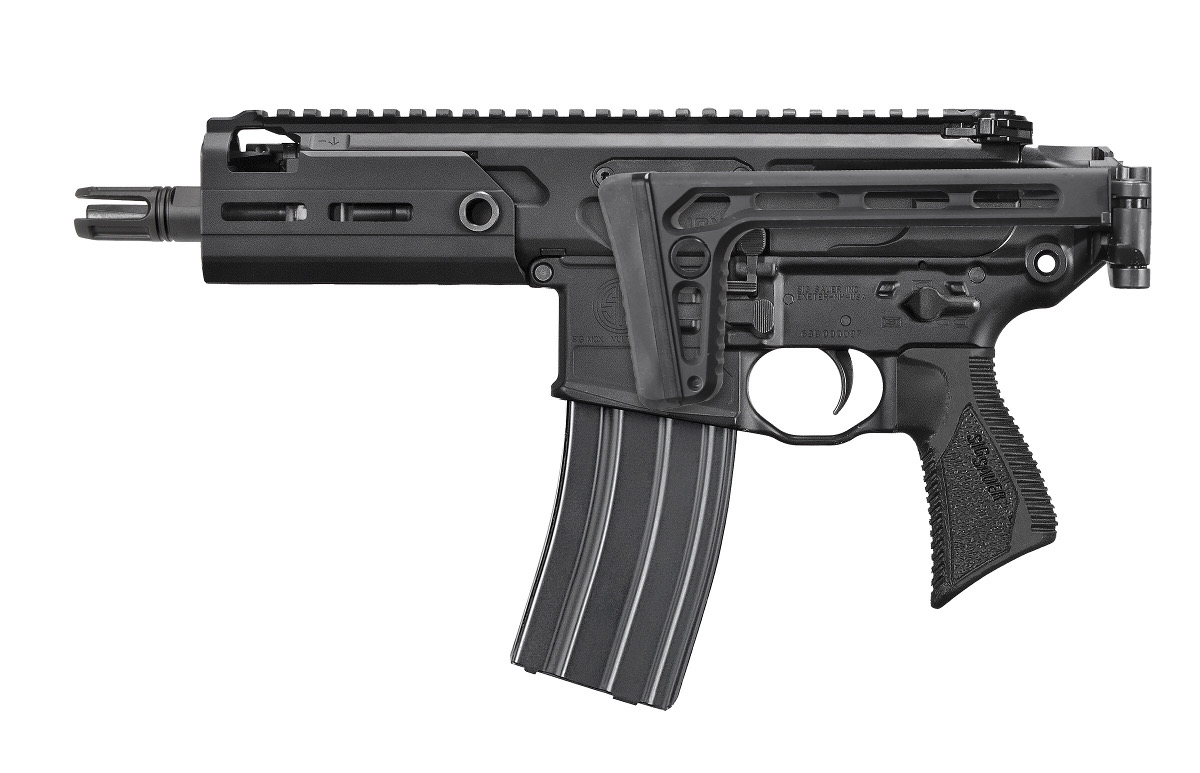
The evaluators will have access to a sound suppressor Sig Sauer has specially developed for the .300 Blackout round, well as the company’s SRD762, which is available with a quick detach mounting system. The latter type works with a variety of different .30 caliber and smaller ammunition types, according to its website.
The last major items in the order are Wilcox BOSS 300 non-magnifying optics, which are calibrated for the .300 Blackout’s ballistics, and Sig Sauer Juliet 4x magnifiers. With both system available and the magnifier on a quick detach mount, a special operator could easily go from having a sight ideal for close-quarters combat to one that gives them the ability to make accurate shots at longer distances.

And though the purchase also includes barrels in 5.56x45mm, the .300 Blackout’s characteristics are very much at the core of the Rattler’s design and SOCOM’s requirements. Advanced Armament Corporation (AAC) first created the Blackout round in cooperation with Remington in the late 2000s.
AAC goal was to design a new ammunition type for AR-15 and M16-type weapons and derivatives thereof that would be quiet, but still relatively accurate and powerful, even in a gun with an extremely short barrel and a sound suppressor. The 5.56x45mm round performs poorly out of short barrel firearms to begin with.
AAC originally crafted two basic types of ammunition under the .300 Blackout moniker, the first being a supersonic 125 grain round that had similar ballistics to the Soviet 7.62x39mm cartridge, along with a much heavier 200 grain subsonic type specifically for firearms with sound suppressors. The market for .300 Blackout has since grown to the point that other manufacturers offer different loads with various combinations of bullets and powder charges, which offer different characteristics in certain conditions.
Testing showed that an AR-15 in .300 Blackout with a 9” barrel produced the same muzzle energy as a standard 5.56x45mm M4A1 carbine with its 14.5-inch barrel, according to a 2012 AAC presentation. The company posited that a gun in .300 Blackout with a 9-inch barrel version would still be useful at a range of just over 480 yards while Colt’s 5.56x45mm M4 Commando, with an 11.5-inch barrel, is only reliably effective out to around 440 yards.
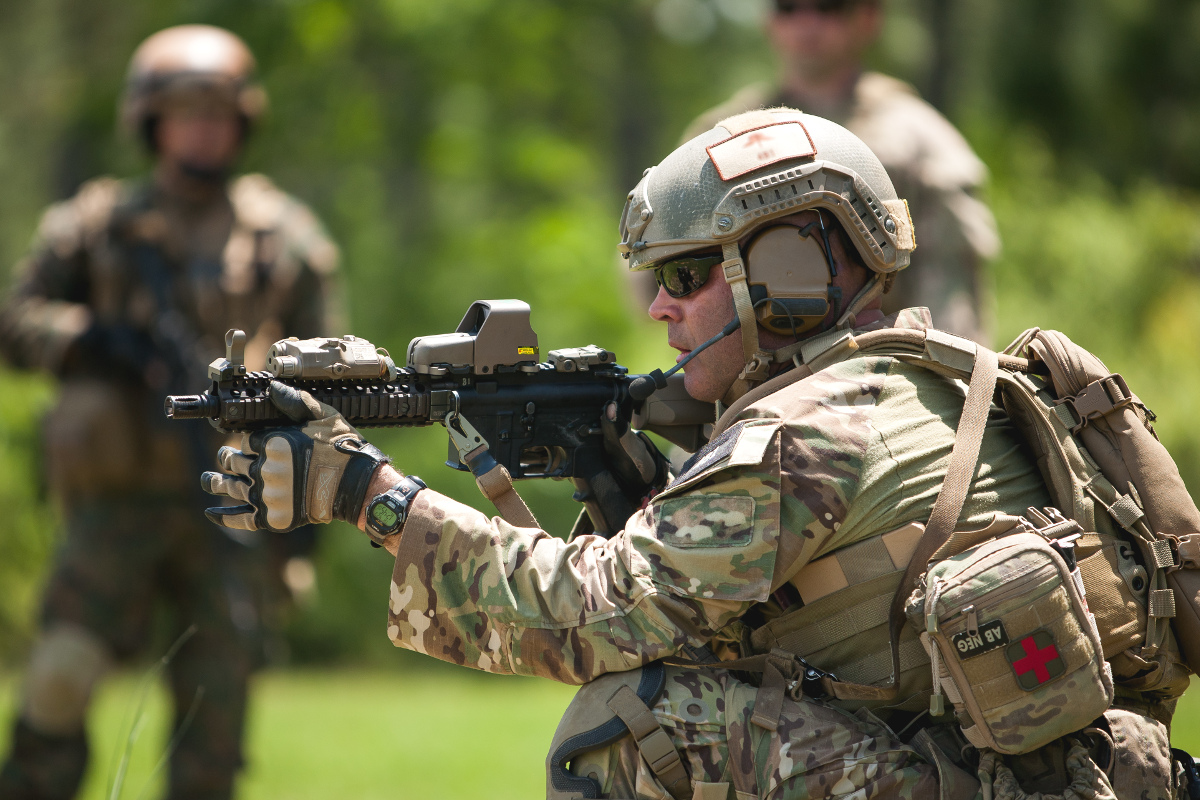
The .300 Blackout cartridge do generally have heavier, slower-moving bullets than typical 5.56x45mm loads, highlighting that the ammunition might be best suited to the PDW role or other shorter-range combat. That larger projectiles also give the Blackout rounds better performance against harder cover, such as wood panels, car doors, and auto glass, which could easily send many lighter 5.56mm bullets off course or shatter them entirely.
On top of that, since 5.56x45mm to .300 Blackout share the same case head and taper, its generally not difficult to switch from one to the other, which was a key part of SOCOM’s initial requirement. In AR-15 and M16-pattern guns it is as simple as swapping out the barrel. Magazines for one ammunition type will work for the other, as well.
What all this means is that a PDW-type weapon in this caliber gives special operators a very useful tool in very confined spaces that also reasonably effective against enemy forces at longer ranges if the situation were to change suddenly. Sig Sauer has been heavily focusing on the idea of a large amount of firepower in a compact package in its marketing materiel for the Rattler and other MCX versions, which includes a series of four slick Hollywood-esque short films.
The fourth of these, titled “Tango Down,” features fictional special operators working discreetly in stereotypical Middle Eastern setting armed with the PDW type. You can watch the full clip below.

“You gotta understand that if anything bad happens, it’s going to be over with before anybody can help you,” the commander says at the mission briefing. “So, I need you to roll as heavy as you possibly can without blowing your cover.”
As of 2015, U.S. special operations forces units were reportedly already using a larger version of the MCX in .300 Blackout, nicknamed the Black Mamba. That weapon, which SOCOM procured as part of its “Low Visibility Assault Weapon” program, had a nine-inch barrel, though, according to Guns of the Special Forces, 2001-2015, by Leigh Neville.
That prior experience may have given Sig Sauer an advantage, at least in this initial deal. AAC had already made a similar weapon, known as the Honey Badger, which seemed tailored to the SOCOM requirement for an ultra-compact assault rifle.
Belgian gunmaker FN Herstal now offers a PDW-sized version of its SCAR series, which American special operators already use, but not in .300 Blackout. German firm Heckler and Koch has a version of its HK416 and HK 417 family in that caliber, the HK337, but again with a nine-inch barrel that would be too long for SOCOM’s stated needs. There’s nothing to say that either of those companies couldn’t reconfigure those weapons to meet the parameters for the special operations PDW, though.
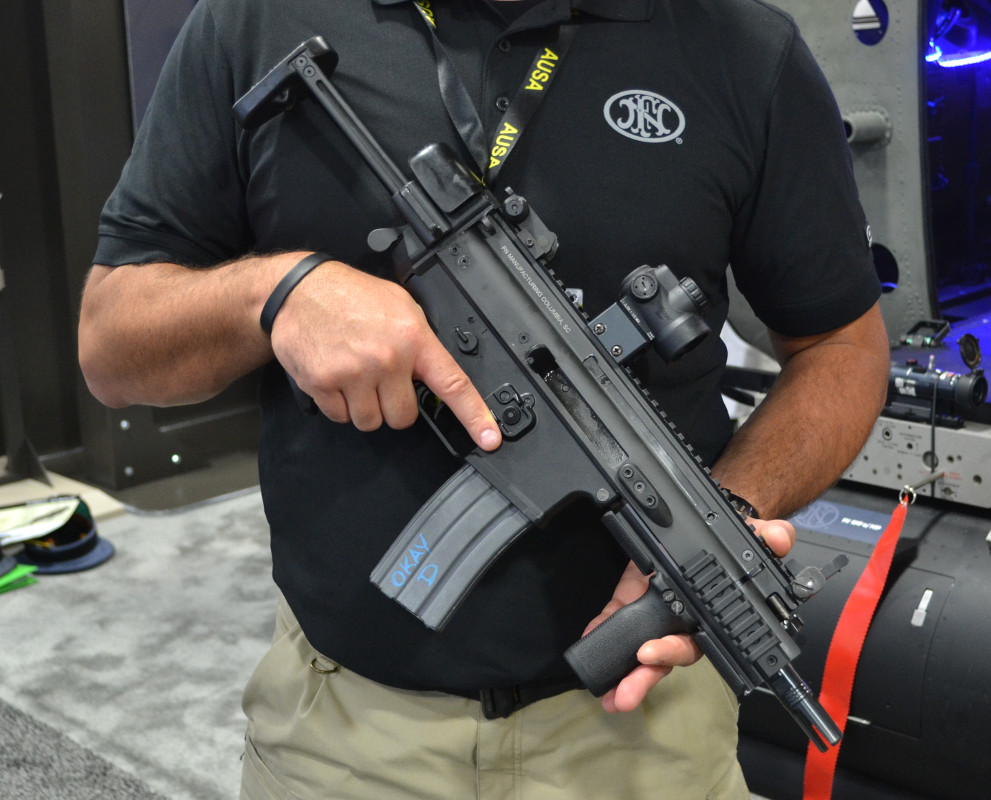
The Army makes it clear in the contracting documents that this small buy and the subsequent combat evaluation are intended only to provide information to help refine the existing requirements. At the same time, having a system already ready for large-scale production could put Sig Sauer in a good position to win that subsequent contract, too.
“The United States Special Operations Command has identified an urgent operational need that is jeopardizing lives and safety as this new capability is being developed,” the Army’s justification says in no uncertain terms. “Only one respondent, Sig Sauer, has a PDW kit that is commercially available, meets the technical requirements of the sources sought, and is ready for delivery to conduct a combat evaluation in order to determine a solution for a M4A1 conversion kit.”
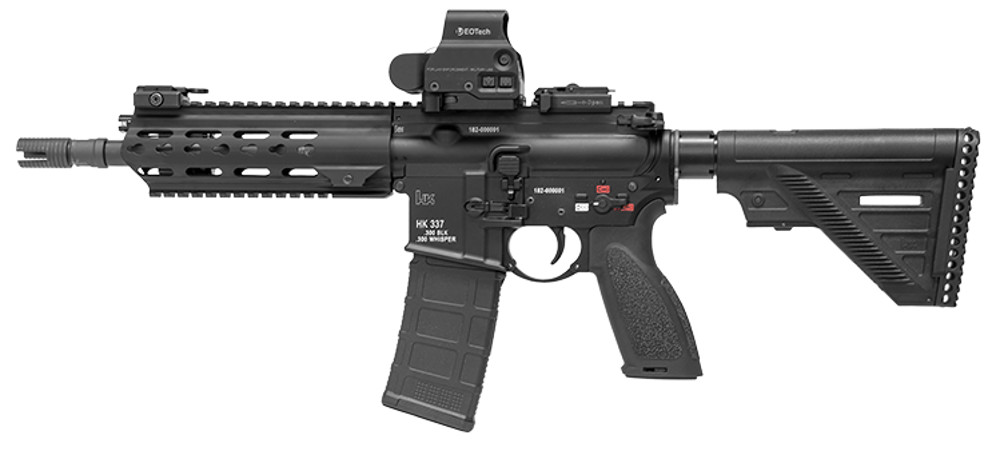
The contracting documents do not say how long the combat evaluation will last, but that it will come 60 to 90 days after the Army finalizes the deal. There’s also no clear timeline for how long it might take SOCOM to take whatever data it gathers and starts the formal competition.
We at The War Zone will definitely be keeping our eyes out for news of those developments as the year goes on.
Contact the author: joe@thedrive.com
